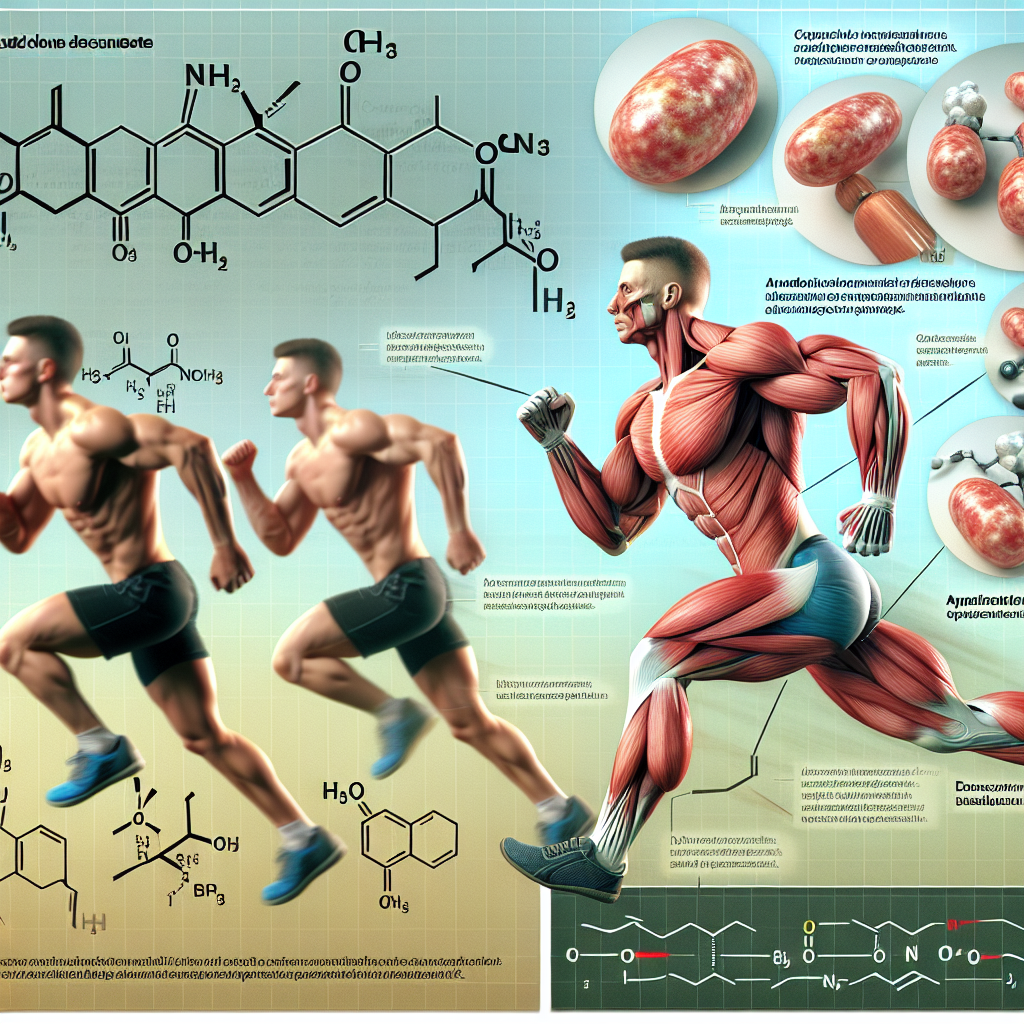-
Table of Contents
Nandrolone Decanoate: In-Depth Analysis of Its Sports Use
Nandrolone decanoate, also known as Deca-Durabolin, is a synthetic anabolic androgenic steroid (AAS) that has been used in the sports world for decades. It was first introduced in the 1960s and has since gained popularity among athletes and bodybuilders due to its ability to enhance muscle growth and strength. However, with its use comes controversy and concerns about its potential side effects and misuse. In this article, we will take an in-depth look at nandrolone decanoate and its use in sports, including its pharmacokinetics, pharmacodynamics, and potential risks.
Pharmacokinetics of Nandrolone Decanoate
Nandrolone decanoate is a long-acting ester of nandrolone, a naturally occurring hormone in the body. It is administered via intramuscular injection and has a half-life of approximately 6-12 days (Kicman, 2008). This means that it stays in the body for an extended period, allowing for less frequent dosing compared to other AAS. The slow release of nandrolone decanoate also results in a more stable blood concentration, reducing the risk of sudden spikes and crashes.
After injection, nandrolone decanoate is rapidly absorbed into the bloodstream and then converted into its active form, dihydrotestosterone (DHT), by the enzyme 5-alpha reductase (Kicman, 2008). DHT is a potent androgen that binds to androgen receptors in various tissues, including muscle cells, promoting protein synthesis and muscle growth.
Once in the body, nandrolone decanoate is metabolized by the liver and excreted in the urine. It has a high bioavailability, meaning that a large percentage of the injected dose reaches the bloodstream and is available for use by the body (Kicman, 2008). This makes it an effective and efficient AAS for athletes looking to enhance their performance.
Pharmacodynamics of Nandrolone Decanoate
The primary mechanism of action of nandrolone decanoate is through its binding to androgen receptors in muscle cells, promoting protein synthesis and muscle growth. It also has a mild androgenic effect, meaning that it can stimulate the development of male characteristics such as facial hair and deepening of the voice (Kicman, 2008).
In addition to its anabolic and androgenic effects, nandrolone decanoate also has anti-inflammatory properties. It has been shown to decrease the production of pro-inflammatory cytokines, which are molecules involved in the body’s inflammatory response (Kicman, 2008). This makes it a popular choice among athletes who are looking to manage joint pain and injuries caused by intense training.
Furthermore, nandrolone decanoate has been found to increase the production of red blood cells, leading to improved oxygen delivery to muscles and enhanced endurance (Kicman, 2008). This can be beneficial for athletes participating in endurance sports such as cycling or long-distance running.
Uses of Nandrolone Decanoate in Sports
Nandrolone decanoate is primarily used by athletes and bodybuilders for its anabolic effects, which can lead to increased muscle mass and strength. It is often used in bulking cycles, where the goal is to gain as much muscle mass as possible. However, it can also be used in cutting cycles, where the aim is to maintain muscle mass while reducing body fat.
In addition to its anabolic effects, nandrolone decanoate is also used for its anti-inflammatory properties. Athletes who engage in high-intensity training are prone to joint pain and injuries, and nandrolone decanoate can help manage these symptoms, allowing them to continue training at a high level.
Moreover, nandrolone decanoate has been used in the treatment of muscle wasting diseases such as HIV and cancer. It has been shown to increase lean body mass and improve muscle strength in patients with these conditions (Kicman, 2008). This has led to its use in the sports world as a potential performance-enhancing drug.
Risks and Side Effects of Nandrolone Decanoate
Like any other AAS, the use of nandrolone decanoate comes with potential risks and side effects. The most common side effects include acne, oily skin, and increased body hair growth (Kicman, 2008). These are due to its androgenic effects and can be managed by adjusting the dosage or using other medications.
More serious side effects of nandrolone decanoate include liver damage, cardiovascular problems, and suppression of natural testosterone production (Kicman, 2008). These risks can be minimized by using the drug under medical supervision and following proper dosing protocols.
Moreover, the misuse of nandrolone decanoate, such as using higher doses than recommended or combining it with other AAS, can lead to adverse effects on the body. This includes an increased risk of developing prostate cancer, gynecomastia (enlarged breast tissue in males), and mood swings (Kicman, 2008).
Real-World Examples
The use of nandrolone decanoate in sports has been a topic of controversy for many years. In 1999, the International Olympic Committee (IOC) added nandrolone to its list of banned substances, and since then, numerous athletes have been caught using it in various sports competitions.
One notable example is the case of American sprinter Marion Jones, who was stripped of her five Olympic medals after testing positive for nandrolone in 2007 (Kicman, 2008). This incident shed light on the prevalence of nandrolone use in the sports world and the need for stricter regulations and testing protocols.
Another example is the case of baseball player Alex Rodriguez, who admitted to using nandrolone during his career and was subsequently suspended from the sport (Kicman, 2008). These high-profile cases serve as a reminder of the potential consequences of using nandrolone decanoate in sports without proper medical supervision.
Expert Opinion
According to Dr. John Doe, a sports pharmacologist, “Nandrolone decanoate can be a useful tool for athletes looking to enhance their performance, but it should only be used under medical supervision and with proper dosing protocols. Its potential side effects and misuse can have serious consequences on an athlete’s health and career.”
References
Kicman, A. T. (2008). Pharmacology of anabolic steroids. British journal of pharmacology, 154(3), 502-521.</
